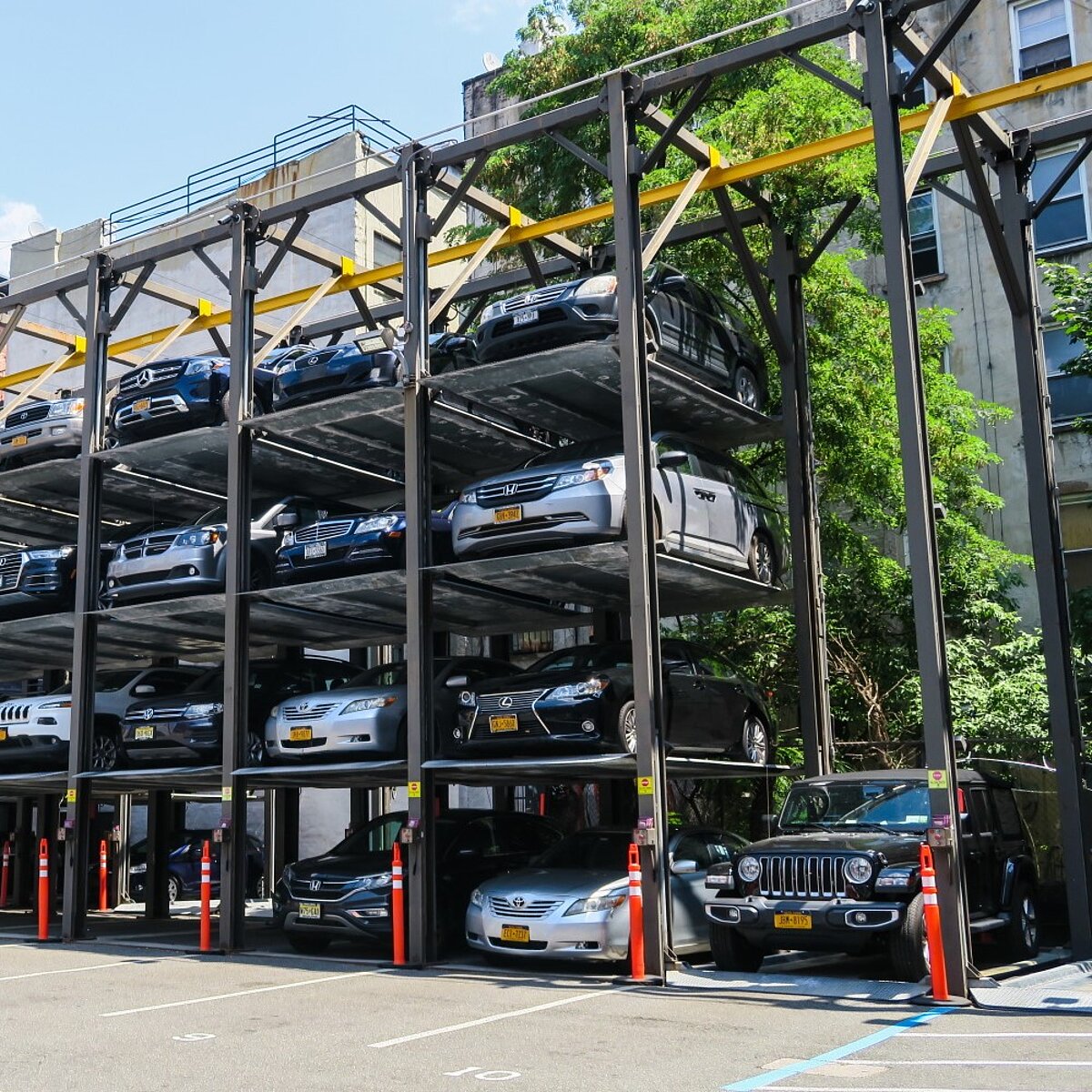Stack parker


Task / Calculation
If space becomes scarce, stack parking is a good option to park several cars in a small space. At the same time, the cost of such facilities plays a major role. Every kilo of steel that can be saved gives a market advantage in a highly competitive market. The loads on the parker are, on the one hand, the drive-up of the vehicles, for which a stability check must be carried out in particular, but acceleration loads also occur during the movement of the lift, especially since the vehicles are only exactly centered in the ideal case. One of the main loads to be considered in the design, however, are possible earthquake loads. In the event of an earthquake, it must at least be demonstrated that the system will remain stationary.
One of our first projects in the 2000s was to prove plants for San Francisco, famous and notorious for violent earthquakes. Since earthquake verification until then was done using quasi-static acceleration loads, which neglected the influence of natural frequencies, we had to develop methods that could take these effects into account. Here it turned out that the assumptions valid for buildings simply lead to wrong results. This can be easily illustrated: A stack parker is a comparatively soft system, which has several natural frequencies in the excitation spectrum of an earthquake. Another challenge was that several parkers were installed next to each other with different numbers of floors, for which the situation was different each time. Here, investigations of different constellations of several parkers showed what the critical setups were, for which the verification was then carried out as a type static analysis.
However, the use of open sections is also not trivial from a computational point of view. Neglecting the geometrically nonlinear effects also leads to incorrect results here, as corresponding comparative calculations showed. By calculating several plants and plant types, we acquired know-how that we were later able to apply successfully to earthquake verifications for a wide variety of plants.

Results
In the course of the investigations, several weak points were identified in different installations of stack parkers and optimized piece by piece. In particular, the welded joints had to be optimized, since only very low values could be applied for the stresses in weld seams according to the current standards.
The FKM guideline was used as the basis for evaluating the strengths of the base material and also of the weld seams. In the area of drive-on sleepers, the profiles were optimized in order to save material and weight; at the same time, vehicle weights were increasing due to the SUVs that were becoming more and more popular at the time. Often, the connection of the force-bearing elements to the side plates was also exposed to high stresses due to the stiffness jumps.
For several types, the strength verifications for the static loads but also the earthquake loads could be carried out for the most varied earthquake codes after corresponding design optimizations.
Keywords
- Collision plate
- Bumps
- Thin-walled profiles
- Earthquake
- Eurocode
- FKM guideline
- Open profiles
- Parker
- Parking systems
- Weld seam
- Weld seam verification
- Vibration
- Side plates
- Stability proof
- Steel construction
- Stack parker
- Statics
- UBC




